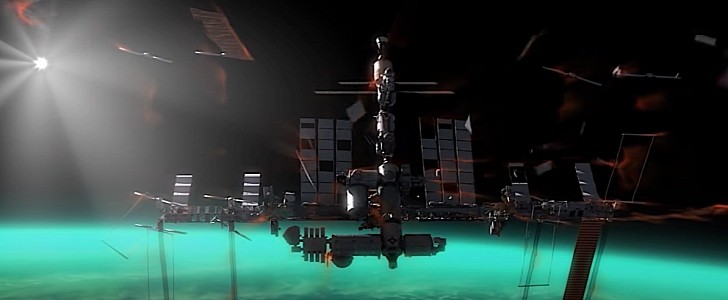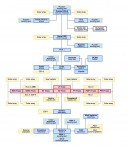As per current NASA plans, the International Space Station (ISS) is scheduled for de-orbit toward the end of the decade, and a controlled crash to Earth in 2031. The war in Ukraine, or to be more precise Russia’s apparent willingness to throw every hint of collaboration with the West out the window, might push that to a much sooner date.
This week, Russian space agency Roscosmos said it will not operate the station past 2024. That would mean the retirement of crucial Russian ISS components, but also cutting the rest of ISS operators off from resupply missions currently being flown by Roscosmos.
Most importantly, Russia is in charge of keeping the station afloat and at the desired altitudes, by firing thrusters on the docked Progress spacecraft.
Dmitry Rogozin, Roscosmos’ head, a man generally known for his reckless statements, already warned of the consequences of leaving the ISS without the means to keep itself afloat. And even if solutions could probably be found, it might not be worth keeping the ISS flying without Russia, at least financially, according to sources cited by Politico.
“We’d have to invest a bunch of additional money to make that happen,” Brian Weeden, a space researcher at the Secure World Foundation told the source. “The ISS was never intended to be broken apart.”
If things don’t calm down, it could mean the de-orbiting could take place sooner than expected.
As it stands, the plan is to have the ISS up and running as normal until 2026. That year, the station’s operational altitude will start being lowered, from the present height of around 420 km (261 miles) to the point of no return, the altitude from where the station can no longer be recovered.
That point is expected to be reached in 2030, while the following year should bring with it the station’s impact with Earth, in a region of the Pacific Ocean called Point Nemo.
Most importantly, Russia is in charge of keeping the station afloat and at the desired altitudes, by firing thrusters on the docked Progress spacecraft.
Dmitry Rogozin, Roscosmos’ head, a man generally known for his reckless statements, already warned of the consequences of leaving the ISS without the means to keep itself afloat. And even if solutions could probably be found, it might not be worth keeping the ISS flying without Russia, at least financially, according to sources cited by Politico.
“We’d have to invest a bunch of additional money to make that happen,” Brian Weeden, a space researcher at the Secure World Foundation told the source. “The ISS was never intended to be broken apart.”
If things don’t calm down, it could mean the de-orbiting could take place sooner than expected.
As it stands, the plan is to have the ISS up and running as normal until 2026. That year, the station’s operational altitude will start being lowered, from the present height of around 420 km (261 miles) to the point of no return, the altitude from where the station can no longer be recovered.
That point is expected to be reached in 2030, while the following year should bring with it the station’s impact with Earth, in a region of the Pacific Ocean called Point Nemo.












